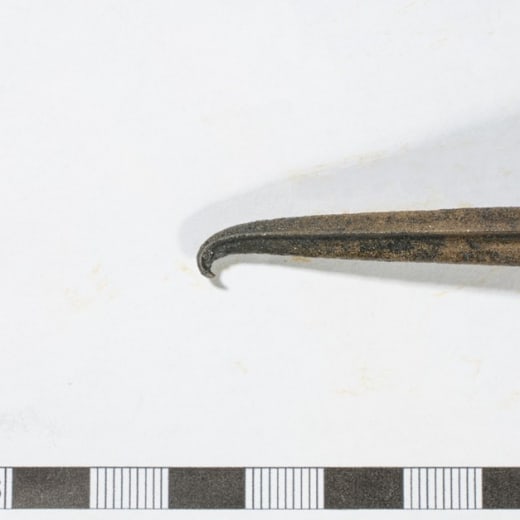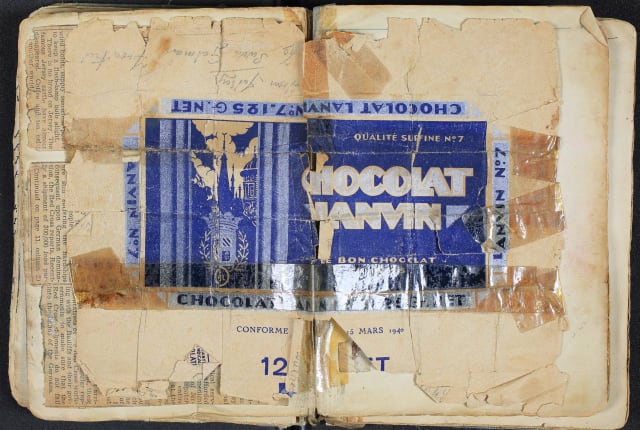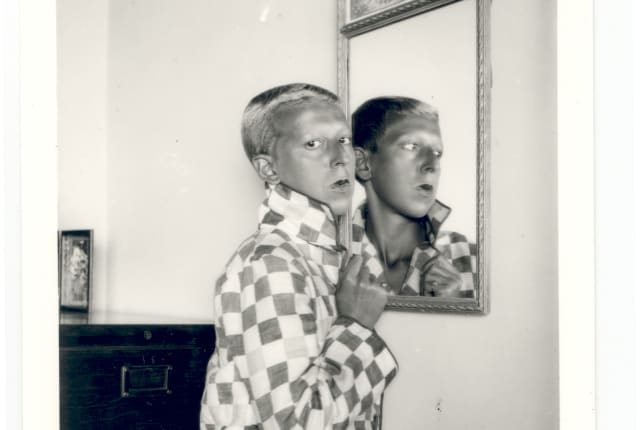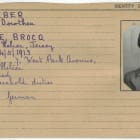
In August 2020 Jay Cornick, a local metal detectorist, brought in a three-thousand-year-old bronze spearhead he had found while detecting on Gorey beach.
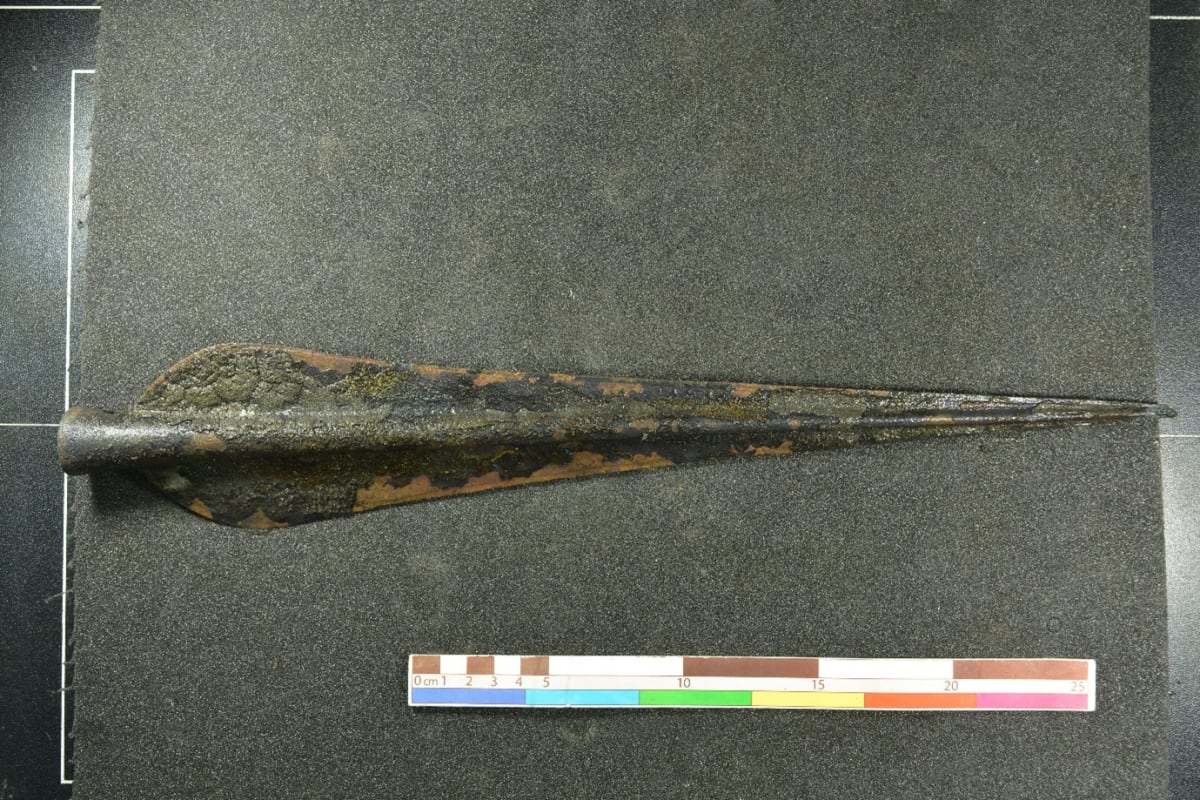
The first thing to do was to record it and then start the conservation process to preserve both the object itself and all the information it could give us. Fortunately, the finder had excavated the spearhead carefully and kept it wet since, so it had not degraded through drying out, as so often happens with beach finds. Objects buried beneath beaches end up full of salt and when exposed to air, this will cause rapid metal corrosion in addition to the shrinkage and warping of any drying organic material.
After photographing and measuring the spearhead, a closer look immediately revealed that the hollow shaft socket, where it would have fitted onto the wooden shaft, was full with what looked like well-preserved wood. It is rare to find organic material like this in archaeological sites in Jersey, as such material usually rots within a short period after burial. The finder, however, had described finding the spearhead pointing straight down in the dark layer of sand found beneath a beach surface. This dark layer is full of bacteria that strip their surroundings of oxygen, so most of the usual degradation processes are slowed down, if not fully halted. This oxygen-free layer is what has similarly preserved the wood of the Mary Rose and Vasa shipwrecks for hundreds of years.
Image:The remains of the wooden shaft still inside the spearhead
Knowing this wood had survived, the spearhead was kept wet until it could be safely removed from the metal. This was achieved by twisting a curved, thin blade between the spearhead’s inner wall and the wood filling it, until the wood was freed and could be pulled out. The extracted wood, in several pieces, produced about 5cm length of the original spear shaft. Amazingly, the shaft wood even contained a cylindrical wooden peg which would have originally gone through two holes in the spearhead socket to hold the shaft in place. The wood was bagged wet and kept in a fridge until it could be examined.
Image: The remains of the wooden shaft and peg
The actual conservation of the spearhead began with removing deposits from its surface. Most of these were a concrete-like material that forms when corrosion products leaking from the metal act like a glue to cement surrounding grains of sand together. Fortunately, the bond between them and the metal surface is often quite weak so can be broken up using a vibrating tip engraving tool. Once all the concretion was removed, a few holes could be seen where the metal had corroded right through, but most of the object was in good condition and even preserved the still sharp hammered edges on its wings.
Image: The black corrosion and concretion before removal
After all the concretion was removed and the original object surface revealed, the spearhead was thoroughly rinsed to remove remaining salt and then air dried. The worst parts of the spearhead were very fragile so it was decided to strengthen them by applying a resin solution that sunk into the porous surface and reinforced it on drying.
Image: The spearhead after conservation
With the object now safe, the wood was sent to the York Archaeological Trust for species identification and carbon dating. This worked well and the results revealed that the wood was field maple, Acer Campestre, a species often used for this sort of object in the Bronze Age. The C14 dating was also a success, giving a date range of 1207-1004 BCE, just over three thousand years old. This dating confirmed what experts had already suggested in terms of age and provenance. The object turned out to be a socketed “Parisien” type spearhead previously found, as the name suggests, near Paris. Nothing like this had ever been found in the Channel Islands before, and even in Europe these are a rare type, probably made as a prestige item for high status people.
Image: The damaged tip of the spearhead
It may never be known how this spearhead ended up under the beach at Gorey. Although tempting to think of something like this as being lost in battle, it was probably less suited to fighting than the more common smaller type of spearhead. Indeed, this spearhead has a bent over tip and a damaged edge, so it might not have stood up to much heavy use. Alternatively, it may have been some sort of offering or, less romantically, accidentally dropped from a boat. Take your pick!











